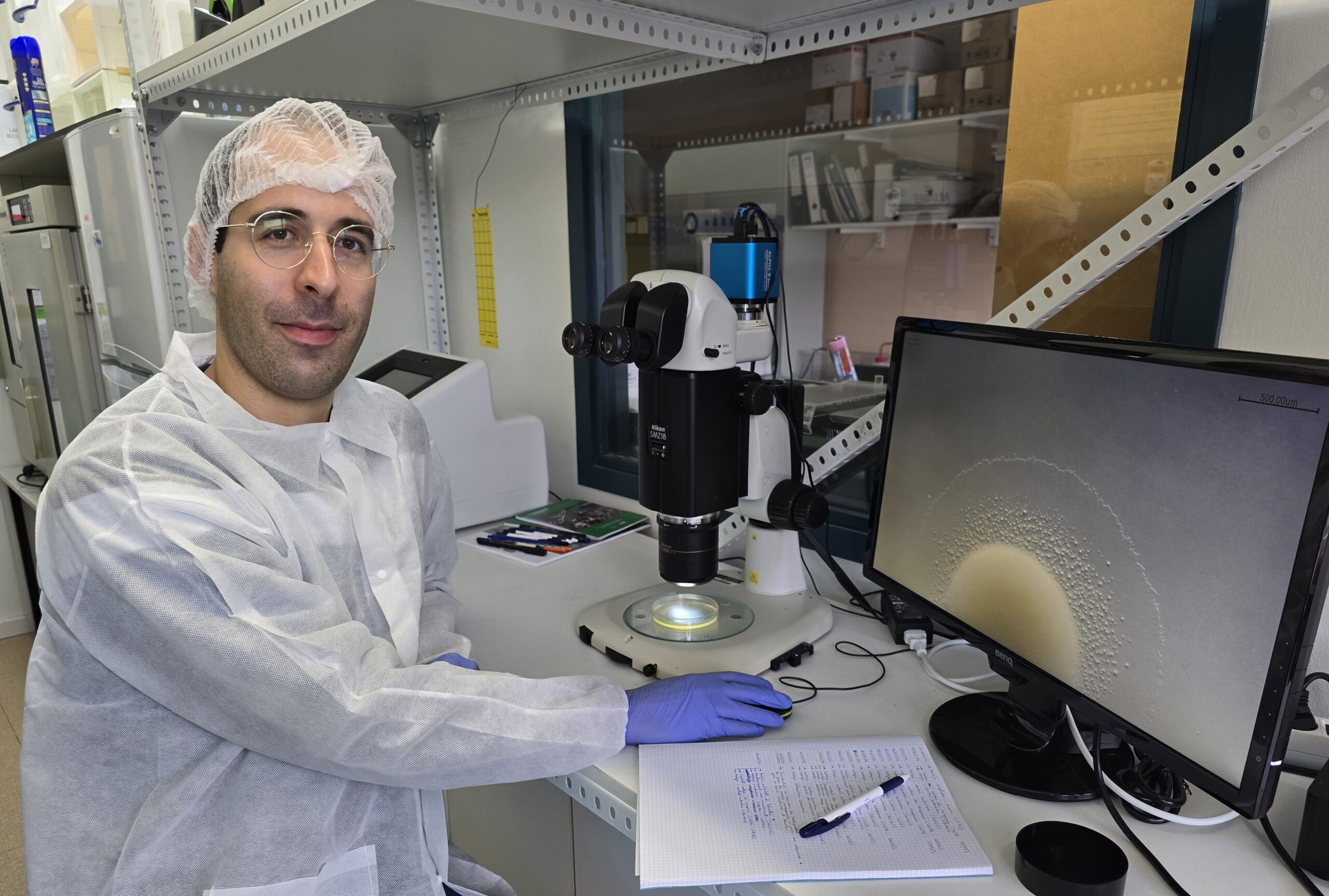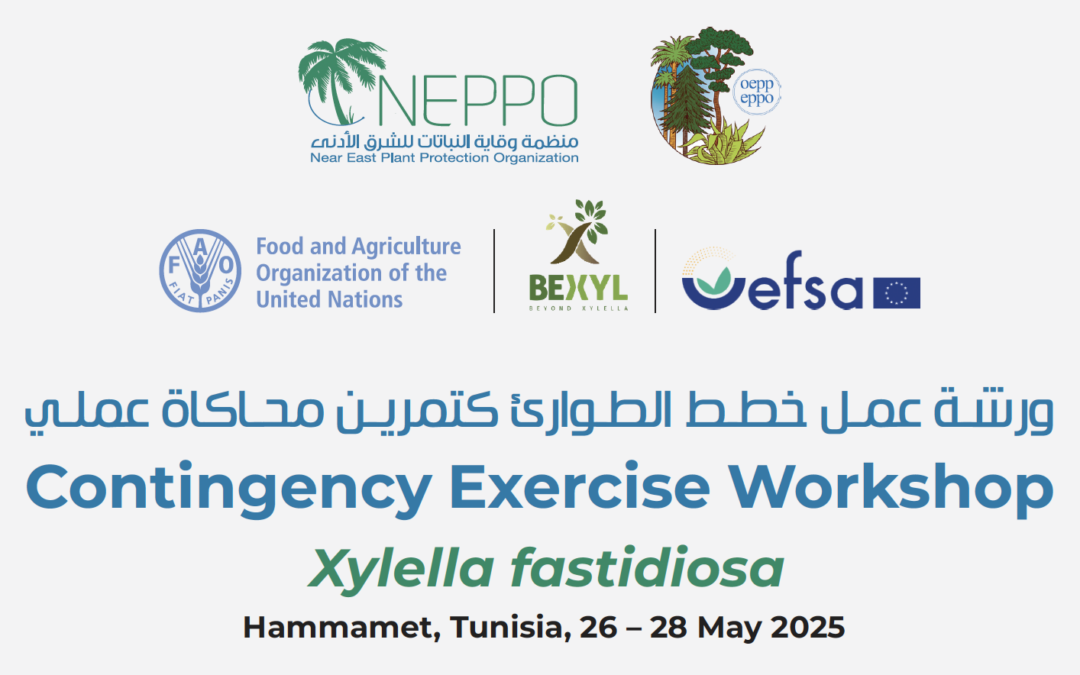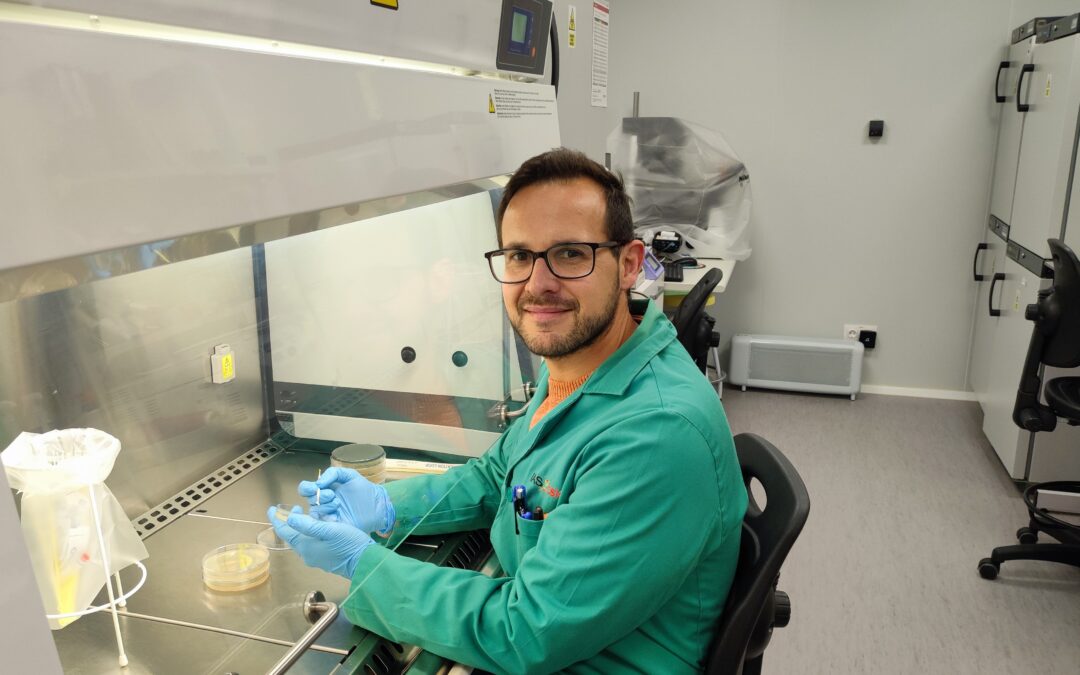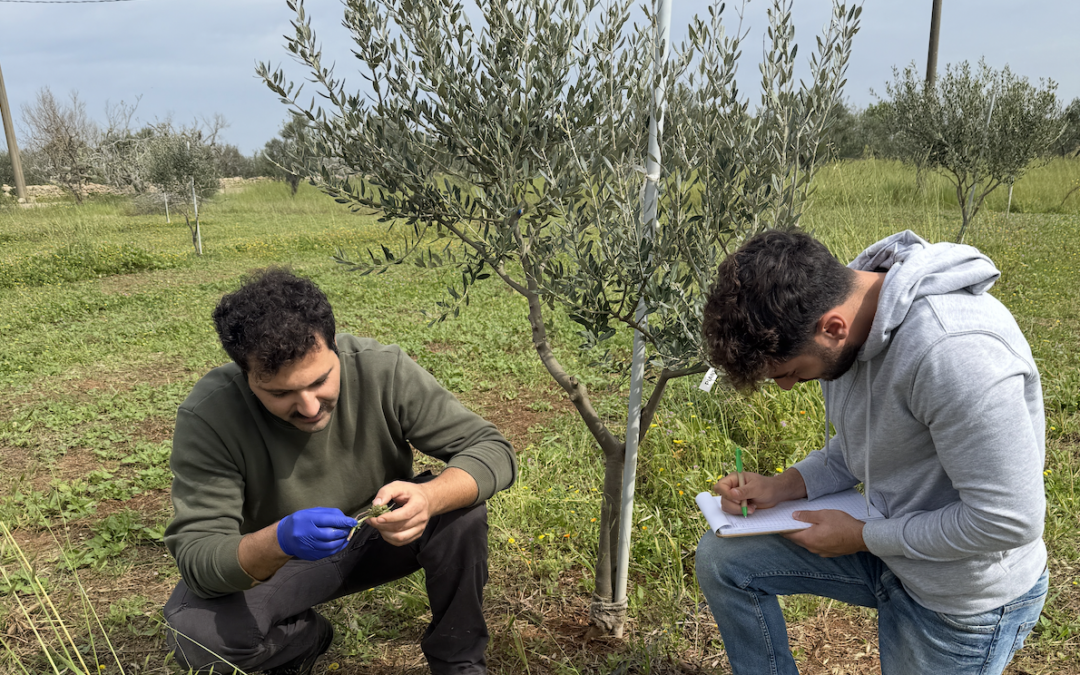The following conversation with Luis Moll, a PhD student at the University of Girona, is the first of interviews with young researchers studying Xylella fastidiosa in connection with the BeXyl project. The idea is to collect profiles and experiences to showcase future research directions and learn about the personal solid motivation behind young people’s choice to study plant health, specifically Xylella fastidiosa.
Luis, please present yourself.
My name is Luis Moll, and I am a PhD student at the University of Girona. I hold a bachelor’s degree in biotechnology and a master’s degree in food biotechnology. My research is based at the Center for Innovation and Development in Plant Health (CIDSAV), collaborating with the Laboratory for Innovation in Organic Synthesis Processes and Products (LIPPSO). This interdisciplinary environment has allowed me to develop microbiology, plant pathology, and organic chemistry expertise. I am in the final stages of my PhD, with my defence scheduled for December 2024.
How did you develop an interest in plant health?
It was from personal experiences. My father worked as a farmer during his childhood, and to this day, he still tends to a small plot of land as a hobby. Growing up, I learned firsthand the importance of respecting and caring for the land. This sparked a curiosity that deepened during my bachelor’s degree, where I began to appreciate the hidden complexity of plants. While they might appear more straightforward than animals, their intricate biological systems fascinated me. In addition, with the increasing threats of climate change and emerging plant diseases, ensuring plant health is critical to safeguarding food security for future generations. Investing in plant health research and solutions is essential to address these global challenges.
How did you meet X. fastidiosa in your academic pathway?
It is a mix of academic and personal factors. Initially, I became aware of the devastation this pathogen was causing in Italy. Still, it wasn’t until it was detected in my home region, the Balearic Islands, that the impact hit close to home. This coincided with the CIDSAV beginning to work on X. fastidiosa, and my interest in the pathogen grew. During my bachelor’s degree, I developed a strong passion for research and knew I wanted to pursue a PhD. Then, my now-supervisors (Dr Anna Bonaterra, Dr Esther Badosa and Dr Lidia Feliu) and the director of the CIDSAV (Prof. Emilio Montesinos) suggested I pursue a PhD with them as part of a project they were preparing, and I was immediately on board with the idea. Since then, I’ve had the opportunity to work on several projects focused on X. fastidiosa, such as BeXyl, expanding my understanding of this challenging plant pathogen.

What’s your thesis about?
My PhD thesis focuses on developing sustainable strategies to either prevent the development of diseases caused by X. fastidiosa or try to cure infected plants. My research explores the potential of antimicrobial peptides (AMPs) as an eco-friendly alternative to conventional pesticides. AMPs are promising due to their low toxicity, biodegradability, and minimal environmental impact. However, their effects on X. fastidiosa and the plants it infects are not fully understood. My thesis aims to fill this knowledge gap by studying the impact of AMPs on the biological processes of X. fastidiosa and evaluating their protective effects on infected plants, contributing to the development of new sustainable treatments.
What are the key accomplishments of your research so far?
The development of a fast, precise, and reliable peptide screening platform to assess the effects of peptides on critical processes involved in diseases caused by X. fastidiosa. We evaluated their bactericidal activity, antibiofilm activity, impact on the motility of the pathogen, and their ability to act as plant defence elicitors in almond plants, potential hosts for X. fastidiosa. For the first time, we identified peptides with antibiofilm activity and that affected the motility of the pathogen. The most promising peptides were tested under greenhouse conditions, where various of them significantly reduced disease severity in infected almond plants compared to untreated controls, demonstrating their protective potential.
What have been the main obstacles in your research?
The main challenge has been working with X. fastidiosa itself. This bacterium is notoriously tricky to grow, and experiments take considerable time to yield results due to its slow growth rate. Additionally, after infecting plants, observing symptoms takes a long time, further slowing down the research process. As a quarantine plant pathogen in the EU, X. fastidiosa must be handled with extreme care in authorized facilities that follow strict protocols set by plant health authorities and the EU. This also entails significant bureaucracy whenever there is a need to transport materials, such as bacterial strains, between research centres, and there is tight oversight on all experiments. It adds another layer of complexity, as researchers are confined to restricted environments with limited equipment and resources and a lot of paperwork. Therefore, we must creatively tackle our research questions and find innovative solutions within these constraints.
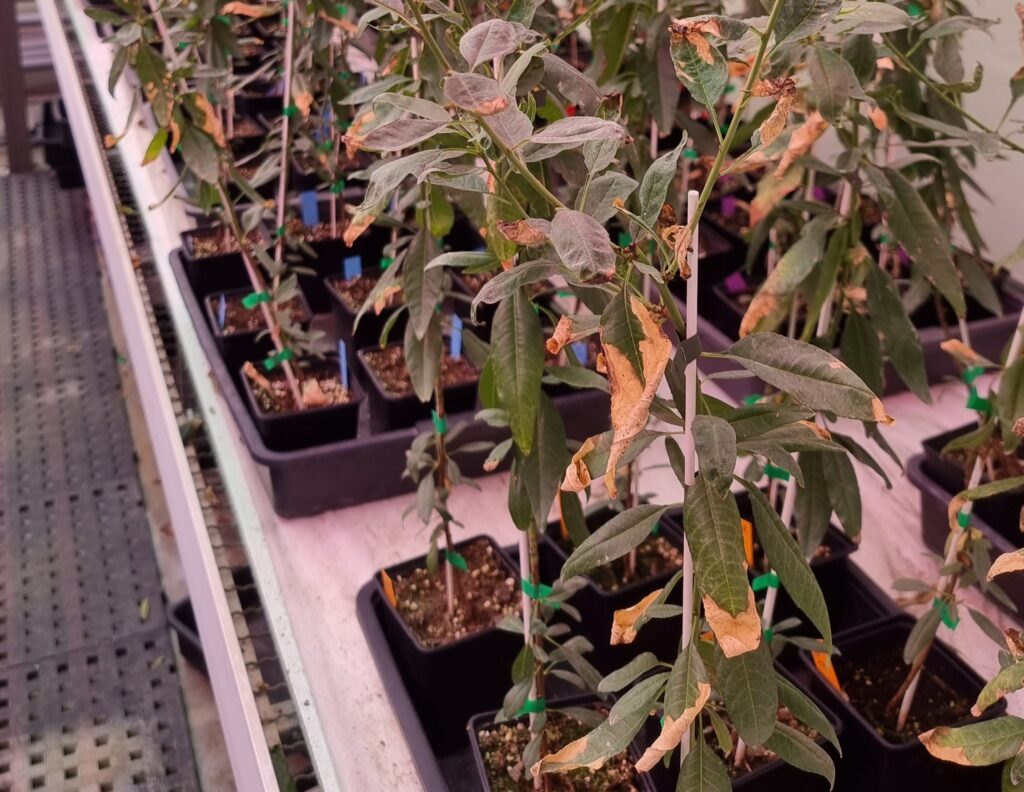
How did you manage to hurdle them?
Given the slow growth rate of X. fastidiosa, maintaining an organized and efficient schedule was crucial. For example, growing the bacterium under optimal conditions takes 14 days, divided into two 7-day steps. To make the most of this time, I began running several experiments in parallel, which required careful planning. My calendar eventually resembled a colourful puzzle, but this system helped me optimize my workflow.
Additionally, since local resources for X. fastidiosa research can be limited, collaboration within the scientific community has been invaluable. I had the opportunity to do a research stay in Prof. Leonardo De La Fuente’s lab in the United States of America, where I conducted experiments in microfluidic chambers to assess the impact of peptides on the twitching motility of X. fastidiosa, something that would have been challenging to achieve locally. I also worked in Dr. Blanca Landa’s Sustainable Agriculture Institute (IAS-CSIC) lab, using their transmission electron microscopy facilities to study the bacterium’s type IV pili.
What is your plan after the thesis?
I want to continue researching plant health by pursuing a postdoctoral position. Ideally, I would like to focus on X. fastidiosa, as it aligns with my current expertise and interests. However, I’m also open to exploring other plant pathosystems, as I believe that delving into new areas of research can provide fresh perspectives and broaden my understanding of plant pathology.

